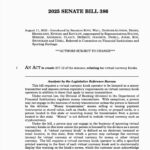Decentralized Detection Networks: The Crypto Industry’s Defense Against Deepfake Scams
Centralized deepfake detectors are structurally misaligned, brittle, and falling behind. The crypto industry urgently requires a crypto-native defense — decentralized detection networks that reward numerous independent model providers for identifying real-world fakes and recording those judgments on-chain.
The Need for Decentralization
The result is increased transparency and composable use across exchanges, wallets, and decentralized finance (DeFi). In Q1 alone, $200 million was stolen through deepfake scams, with over 40% of high-value crypto fraud attributed to AI-generated impersonations.
As criminals utilize deepfakes to circumvent KYC processes and impersonate high-ranking executives in fraudulent transactions, the crypto sector faces a significant threat that centralized detection systems cannot adequately address.
Centralized detectors are often conflicted and siloed, with vendor-locked systems best able to detect their model outputs while missing others. When the same entities create both generators and detectors, the incentives become unclear. These detectors tend to be static and slow, training against last month’s tactics as adversaries evolve more rapidly.
Crypto cannot rely on closed systems that deepfakes consistently outpace without facing similar challenges. It’s time to transition to decentralized detection networks.
In fact, law enforcement agencies across Asia have dismantled 87 deepfake scam rings that used AI-generated deepfakes to impersonate well-known figures like Elon Musk and various government officials. The scams have progressed to include live deepfake impersonations during video calls, where fraudsters pose as blockchain executives to authorize unauthorized transactions.
For instance, Strategy executive chairman Michael Saylor noted that his team removes around 80 fake AI-generated YouTube videos impersonating him daily, which promote fraudulent Bitcoin giveaways through QR codes, demonstrating the persistence of these attacks on social media platforms.
Bitget CEO Gracy Chen remarked, “The speed at which scammers can now generate synthetic videos, coupled with the viral nature of social media, gives deepfakes a unique advantage in both reach and believability.”
When traditional detection tools can only achieve 69% accuracy on real-world deepfakes, it creates a substantial blind spot that criminals leverage. OpenAI CEO Sam Altman recently cautioned about an “impending fraud crisis” as AI has “defeated most authentication methods.” The crypto industry requires solutions that can evolve alongside these rapidly changing threats.
These vulnerabilities even extend to emotional manipulation, as seen in AI-driven romance scams where deepfakes and chatbots fabricate personal relationships to siphon funds.
The core issue lies in entrusting major AI companies to self-regulate their outputs amid political and economic pressures. Google’s SynthID only detects content generated by its own Gemini system, failing to identify deepfakes created by competing tools. Conflicts of interest become inevitable when the same companies that develop generative AI also control detection systems.
A March 2025 study revealed that even the most effective centralized detectors dropped from 86% accuracy on controlled datasets to just 69% on real-world content. These static systems train once on existing databases and expect to function indefinitely, while criminals adapt more swiftly than centralized authorities can react.
Decentralized detection networks embody true blockchain principles applied to digital security. Just as Bitcoin resolved the double-spending issue by distributing trust, decentralized detection tackles the authenticity problem by spreading verification across various competing miners.
Platforms can promote this approach by implementing incentive mechanisms that encourage AI developers to create superior detection models.
The crypto-economic rewards would direct talent towards the most effective solutions, compensating participants based on their models’ actual performance against real-world deepfakes. This competitive framework has shown significantly higher accuracy on diverse content compared to centralized alternatives, achieving results that static systems cannot replicate.
A decentralized verification strategy becomes essential as the generative AI market is projected to reach $1.3 trillion by 2032, necessitating scalable authentication mechanisms that keep pace with AI’s rapid evolution.
Traditional methods can be easily altered or sidestepped, while centralized databases are vulnerable to hacks. Only blockchain’s immutable ledger offers the transparent, secure foundation required to counter the anticipated increase in AI-driven crypto scams.
Deepfake scams could account for 70% of crypto crimes without decentralized detection protocols by 2026. Incidents like the $11 million OKX account drain via AI impersonation illustrate the susceptibility of centralized exchanges to sophisticated deepfake attacks.
DeFi platforms are particularly at risk since pseudonymous transactions complicate verification processes.
When criminals can fabricate convincing AI identities for KYC requirements or impersonate protocol developers, traditional security measures fall short. Decentralized detection presents the only scalable solution that aligns with DeFi’s trustless principles.
Regulators are increasingly demanding robust authentication mechanisms from crypto platforms, with decentralized detection networks already supplying consumer-facing tools that verify content in real time. Why not collaborate with companies that provide auditable, transparent verification that satisfies regulatory requirements while preserving the permissionless innovation driving blockchain adoption?
The blockchain and cryptocurrency sector stands at a critical crossroads: to either cling to centralized detection systems that ultimately lag behind criminal cleverness or to adopt decentralized architectures that transform the industry’s competitive incentives into a formidable defense against AI-induced fraud.
This article is intended for informational purposes only and should not be construed as legal or investment advice. The views, thoughts, and opinions expressed here are solely those of the author and do not necessarily represent the views of ViZi.



















